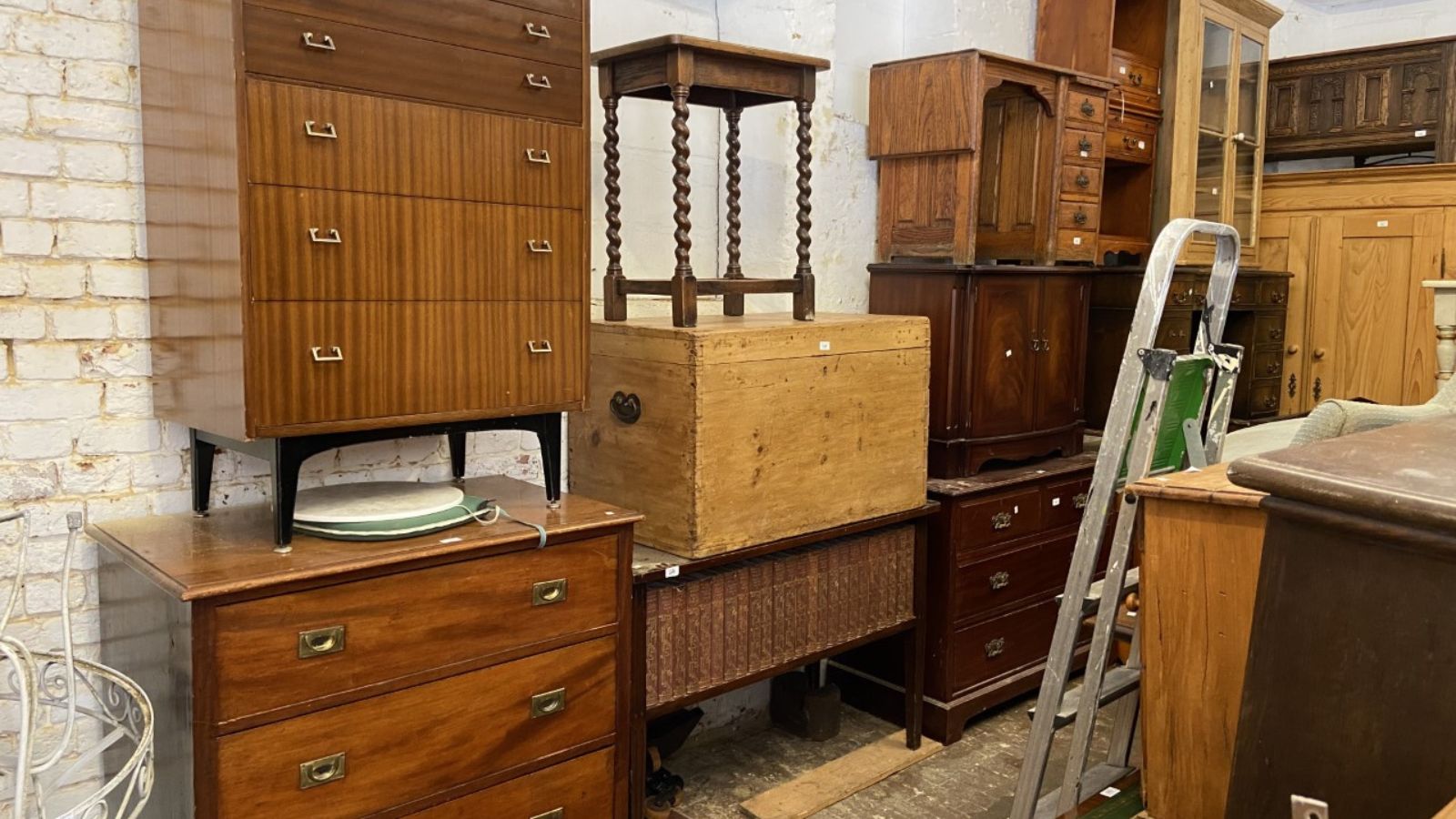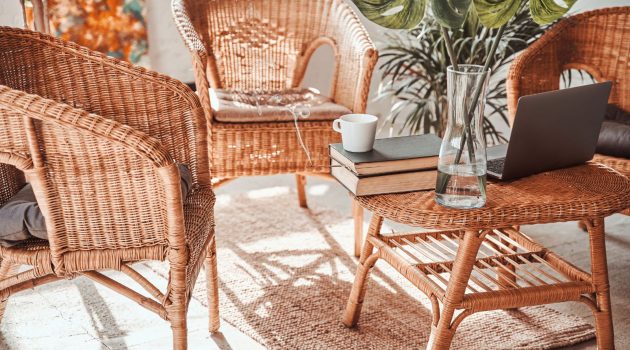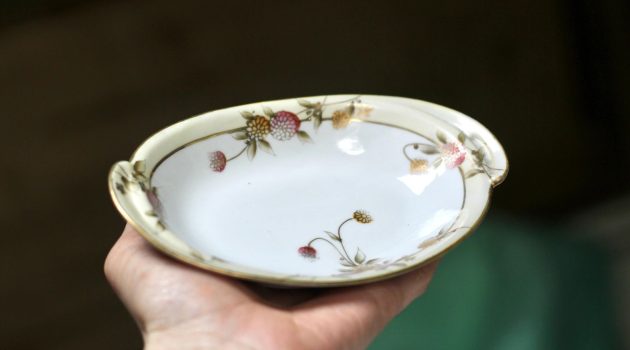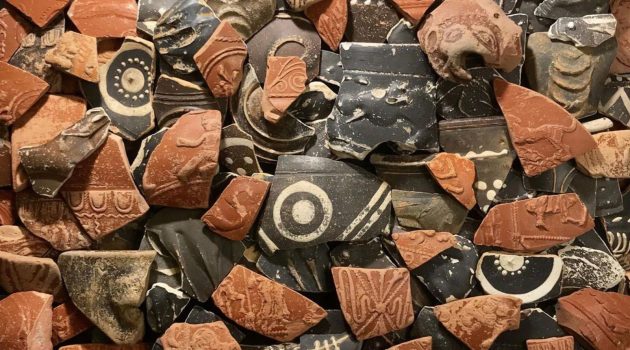Determining the value of old furniture can be an exciting venture – whether you’re a seasoned collector, a newcomer to the world of antiques, or someone who has inherited a piece of furniture and is curious about its worth.
Furniture carries history and stories, not to mention the potential for monetary value that increases with age and rarity.
The key to understanding a piece’s value lies in its details; from the materials and craftsmanship to the style and condition, each element adds to the narrative of the furniture’s past.
To accurately gauge whether old furniture is valuable, you’ll need to be equipped with some knowledge of what to look for.
Learning about dovetail joints, types of wood used, and the style of the craftsmanship can offer clues about the era and quality of a piece.
Certain design elements, like the shape of the legs or the hardware used, can also be indicative of a more significant value.
With the right approach and an eye for detail, you’ll soon be able to unlock the secrets of your furniture’s worth.
Key Takeaways
- Identifying valuable old furniture involves examining craftsmanship, materials, and design details.
- The age and authenticity of a piece are crucial factors in determining its value.
- Understanding restoration needs and market trends can aid in making informed decisions for buying or selling old furniture.
1. Assessing Age and Authenticity
When trying to determine if your old furniture is valuable, examining its age and authenticity is crucial.
The age can indicate rarity and historical significance, while authenticity ensures it’s a genuine antique rather than a reproduction.
Identifying Antique Furniture
Age is a primary indicator of whether furniture is truly antique. For instance, hand-cut dovetails typically signal that a piece was made before 1860, which can add to its value.
In contrast, machine-cut dovetails came into use after that period and can help you confirm a later creation date.
To identify antique furniture, inspect for labels or manufacturer’s marks that can often be found on the bottom or back of pieces. These identifiers can provide information on the origins and age.
Understanding Furniture Styles
The style of furniture often reflects the era it was made in. Knowing different furniture styles can assist you in dating your furniture. For example:
- Queen Anne: Characterized by graceful, curving lines and often features cabriole legs.
- Chippendale: Famous for its elaborate designs and ball and claw feet.
- William and Mary: Recognizable by its more austere, geometric shapes and turned legs.
- Victorian: Known for its ornate carvings and dark wood.
- Sheraton: Features straight lines and relies on inlays rather than elaborate carvings for decoration.
- Regency: Noted for its elegant and refined lines, often incorporating brass inlay.
- Rococo: Ornamental and asymmetric, with an emphasis on organic motifs.
Examining Construction and Joint Techniques
Look at how the furniture is put together to learn about its age and authenticity. The construction and joint techniques used are telling:
- Dovetail Joints: Smooth, uniform dovetails are often machine-cut, while irregular and uneven ones suggest they were hand-cut.
- Mortise and Tenon: This ancient joinery technique was used extensively in pieces from different periods and can still be seen in antique items.
- Veneer: Older veneers are usually thicker, and the veneer patterns, like the book-matching technique, can point to the era of manufacture.
By carefully examining these elements, you can gain insights into the value of your old furniture.
2. Determining Furniture Value
When it comes to antique furniture, its value is determined by several factors including craftsmanship, market demand, and rarity.
Let’s explore how you can assess the worth of your antique pieces.
Conducting Furniture Appraisals
To accurately determine the value of your antique furniture, consider a professional appraisal.
A professional appraiser will provide you with an expert opinion on the fair market value, auction value, replacement value, or wholesale value.
For insurance purposes, or if you plan to sell, this is often the most reliable method to understand the worth of your piece. Here is how to prepare for an appraisal:
- Research: Look into appraisers who specialize in antique furniture.
- Documentation: Gather any provenance, receipts, or previous appraisal documents.
- Condition: Assess the furniture’s condition and note any damage or repairs.
Recognizing Quality Craftsmanship
Quality craftsmanship is a significant indicator of antique furniture value. Look for:
- Dovetail Joints: Uneven, hand-cut dovetails suggest pre-industrial craftsmanship.
- Wood Quality: Rare woods like mahogany or walnut can increase value.
- Handmade Elements: Hand-planed wood or hand-forged hardware are signs of early and potentially more valuable pieces.
Inspecting these aspects carefully can give you insights into the furniture’s age and originality, which are important components of its value.
Understanding Market Demand and Rarity
Demand and rarity also play pivotal roles in determining the value of antique furniture. You should:
- Research the Current Market: Trends can affect the price of antique furniture.
- Identify Unique Characteristics: Furniture with a unique history or from a notable period can be more valuable.
- Consult with Antique Dealers: Knowledgeable dealers can provide insight into the current desirability of your piece.
Understanding these elements can help you gauge whether your furniture piece is just old or a sought-after antique.
3. Identifying and Addressing Furniture Restoration
Before you decide to restore your old furniture piece, it’s important to evaluate its restoration needs and consider the risks and benefits if you’re thinking of a DIY approach.
Evaluating Restoration Needs
When you come across a piece of furniture that’s seen better days, you might ponder whether it’s worth the effort to restore.
Restoration can involve a range of tasks from simple cleaning to refinishing surfaces or reupholstering fabric.
Start by inspecting the piece for signs of original finish, which can enhance its value if properly preserved.
Assess the extent of any repairs needed and determine if the item is indeed a real antique or a vintage look-alike.
Handmade details and quality construction suggest you may have a piece with sentimental or monetary value.
- Check for stability in the structure; wobbly legs or loose joints indicate a need for repairs.
- Examine the surface for scratches and the finish for cloudiness to see if refinishing is required.
- Look for original labeling or maker’s marks which can authenticate it as a real antique.
- Assess the upholstery; torn or worn fabric might benefit from reupholstering.
The Risks and Benefits of DIY
Taking on a DIY restoration project can be rewarding, offering personal satisfaction and potential cost savings. However, mistakes can diminish the value of antique or vintage furniture, so weigh the risks before starting.
Painted furniture often hides the quality of the wood grain, and stripping away the paint can reveal whether you’re dealing with high-quality material or not.
Flipping furniture might seem like a lucrative hobby, but consider the environmental costs—like the chemicals used in stripping and refinishing, and whether you have the means to manage them responsibly.
- Benefits: Customization to your taste, potential savings, and the joy of bringing an old piece back to life.
- Risks: Damaging the original finish or structure, which might reduce the value of the furniture.
Remember, if the piece has high sentimental value, your primary goal might be to preserve these memories.
If the item is a prized antique, a professional’s touch could be necessary to maintain its worth.
In the end, your decision to restore, repair, or reupholster should balance your personal attachment with the piece’s historical and financial value.
4. Tips for Buying and Selling Old Furniture
When you’re navigating the vibrant flea markets or perusing the carefully curated selections at antique stores, knowing a few tips can help you make informed decisions about the old furniture pieces you encounter.
Identifying Valuable Pieces:
- Look for Quality Wood: Antique furniture often features high-quality woods such as oak, mahogany, walnut, pine, maple, and cherry. The type of wood can be a significant indicator of an item’s worth.
- Inspect Construction: Older furniture that has been handcrafted by a cabinet maker may have dovetail joints and unique craftsmanship that set it apart from mass-produced items.
Selling Unwanted Furniture:
- Understand Its History: If you’re selling a piece, be aware of its backstory. Knowing if it’s a family heirloom, the original owner, or the retailer can add to its value.
- Consult a Professional: Before putting a price tag on your item, consider getting an appraisal from a professional to accurately assess its worth.
Buying Tips:
- Research Beforehand: Utilize resources like books and online articles to familiarize yourself with different types of wooden furniture.
- Be Cautious: When buying, be mindful of reproductions. Authentic antique furniture will have irregularities and slight imperfections from handcraftsmanship.
Where to Buy or Sell:
- Flea markets: Great for finding eclectic pieces at reasonable prices.
- Antique stores: Offer a curated selection, often with knowledgeable staff.
- Online platforms: Wide-reaching but require careful examination of listings and seller credibility.
Remember, a piece’s value lies not only in its material but also in its craft, history, and how well it fits with your personal style. Happy hunting!



